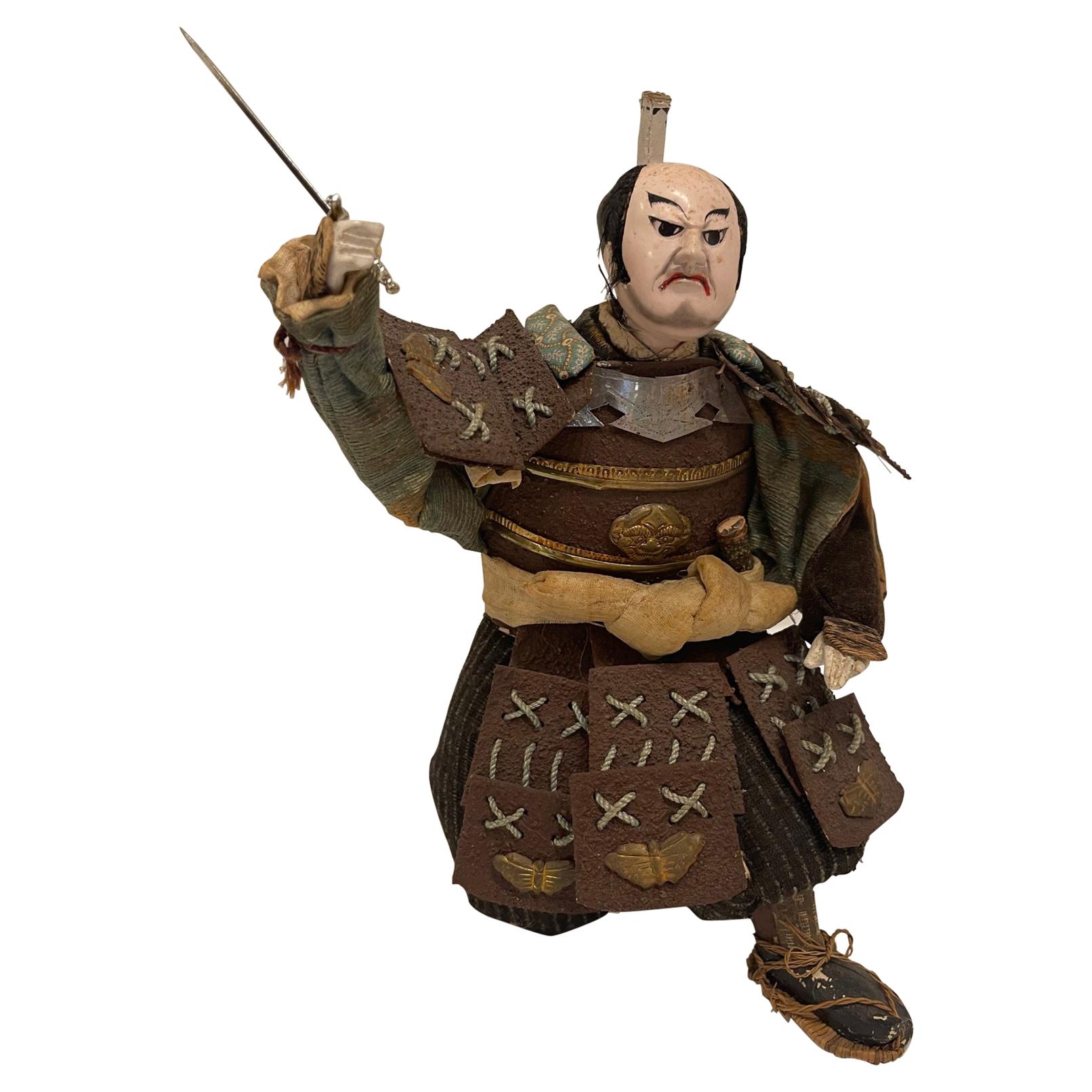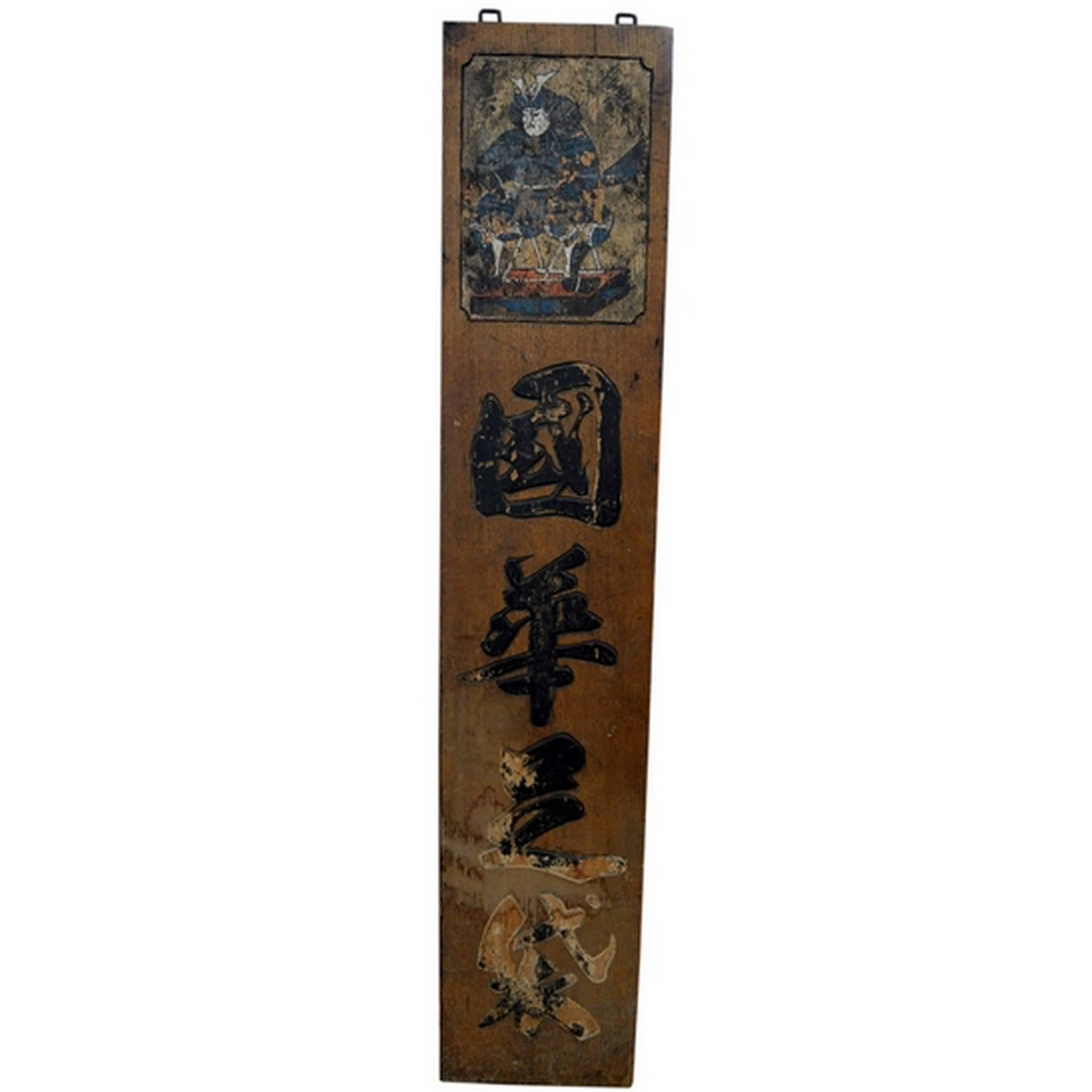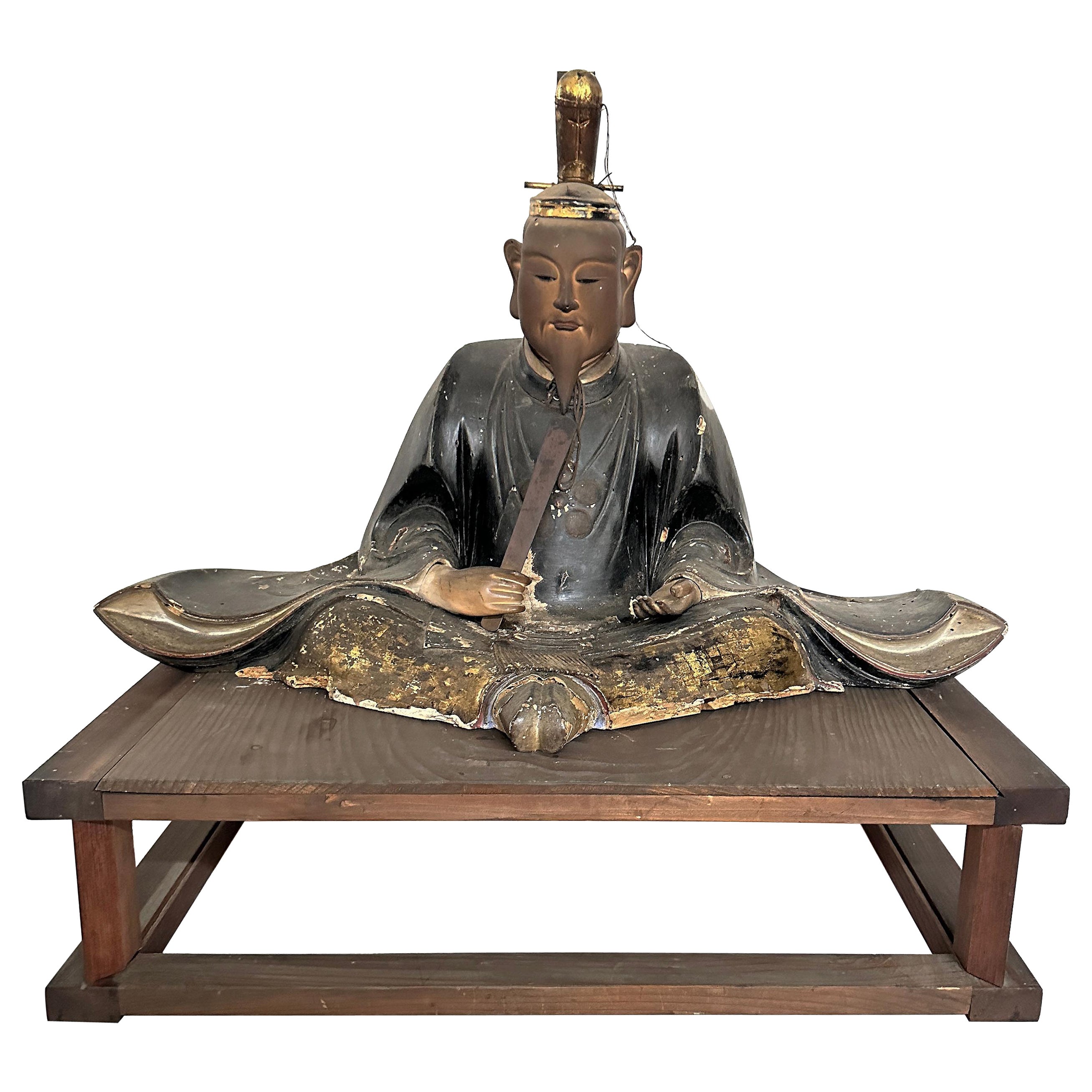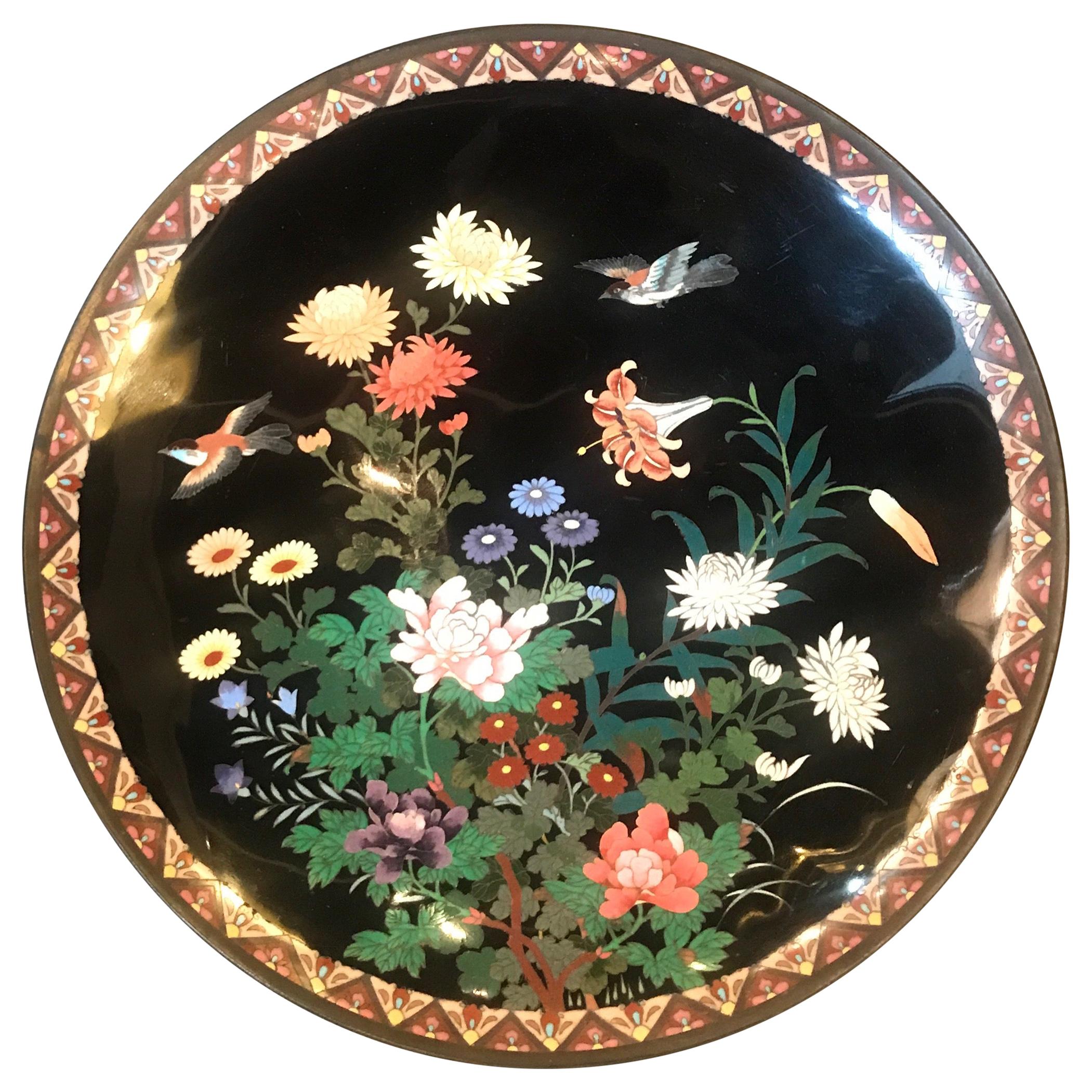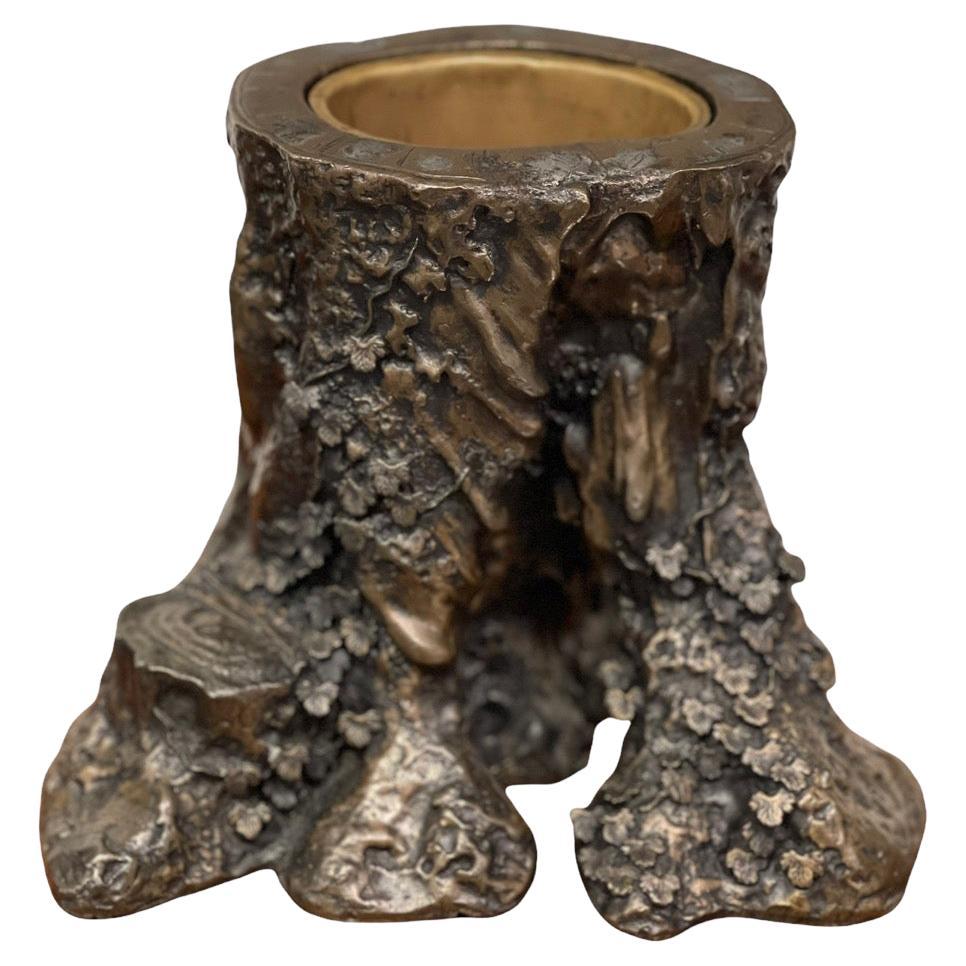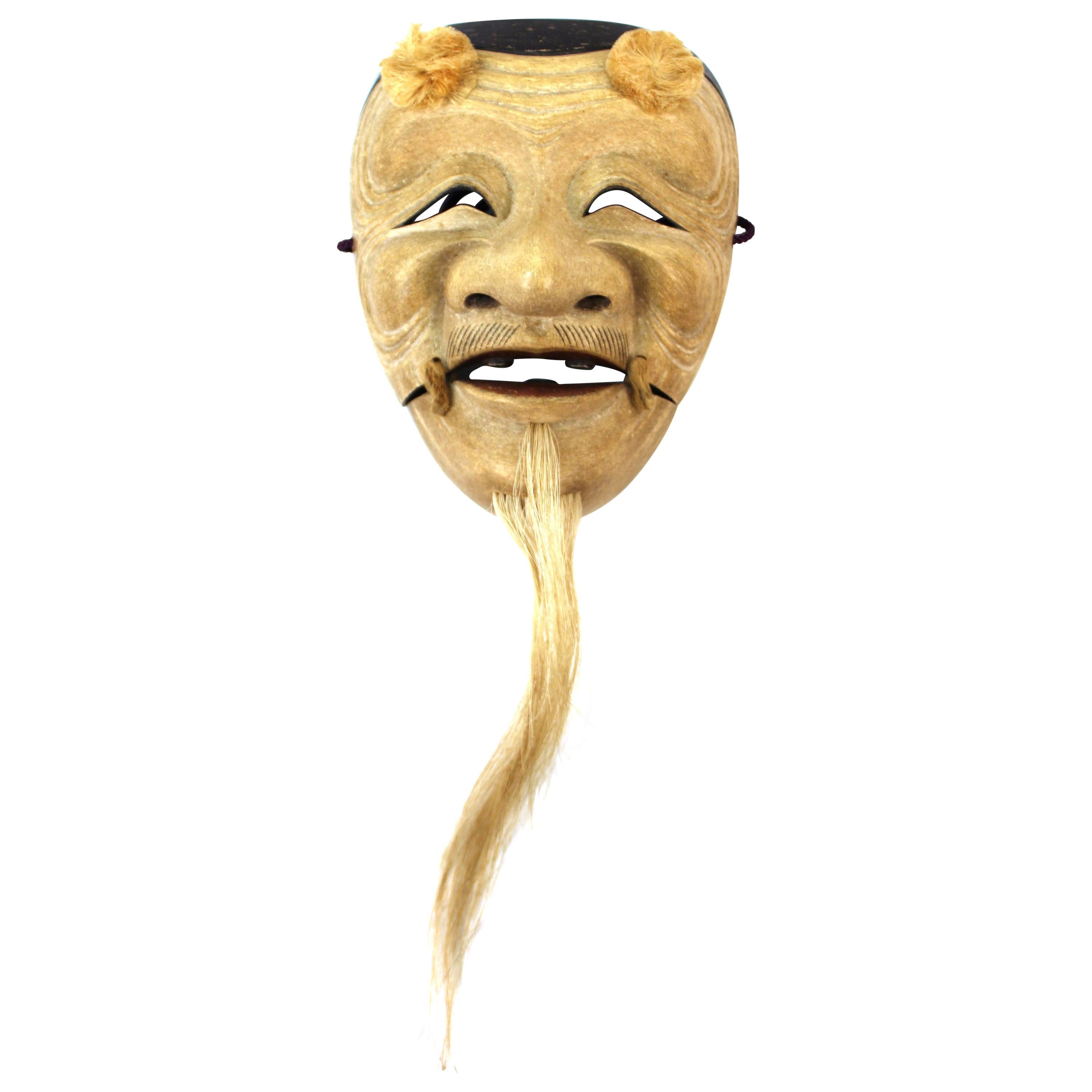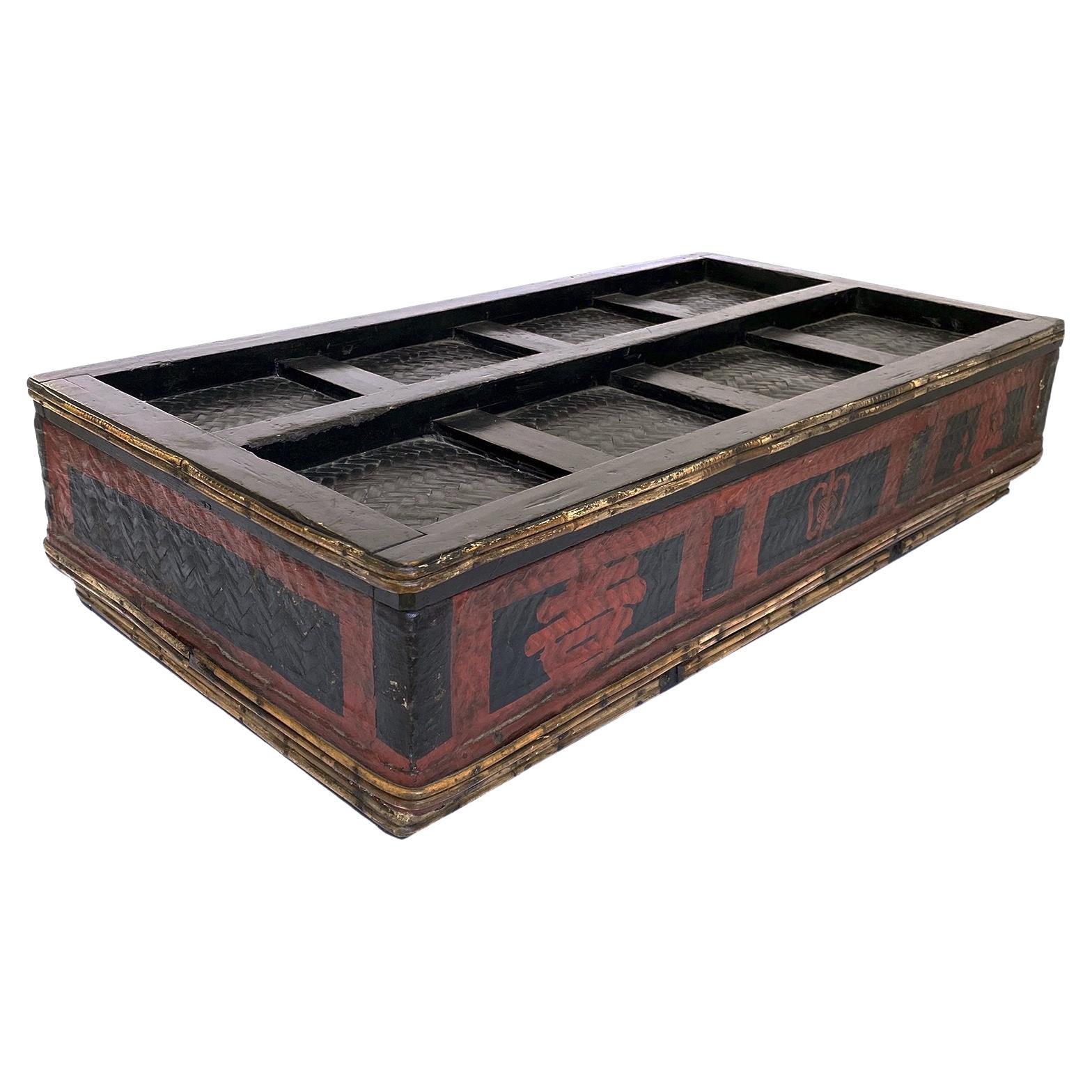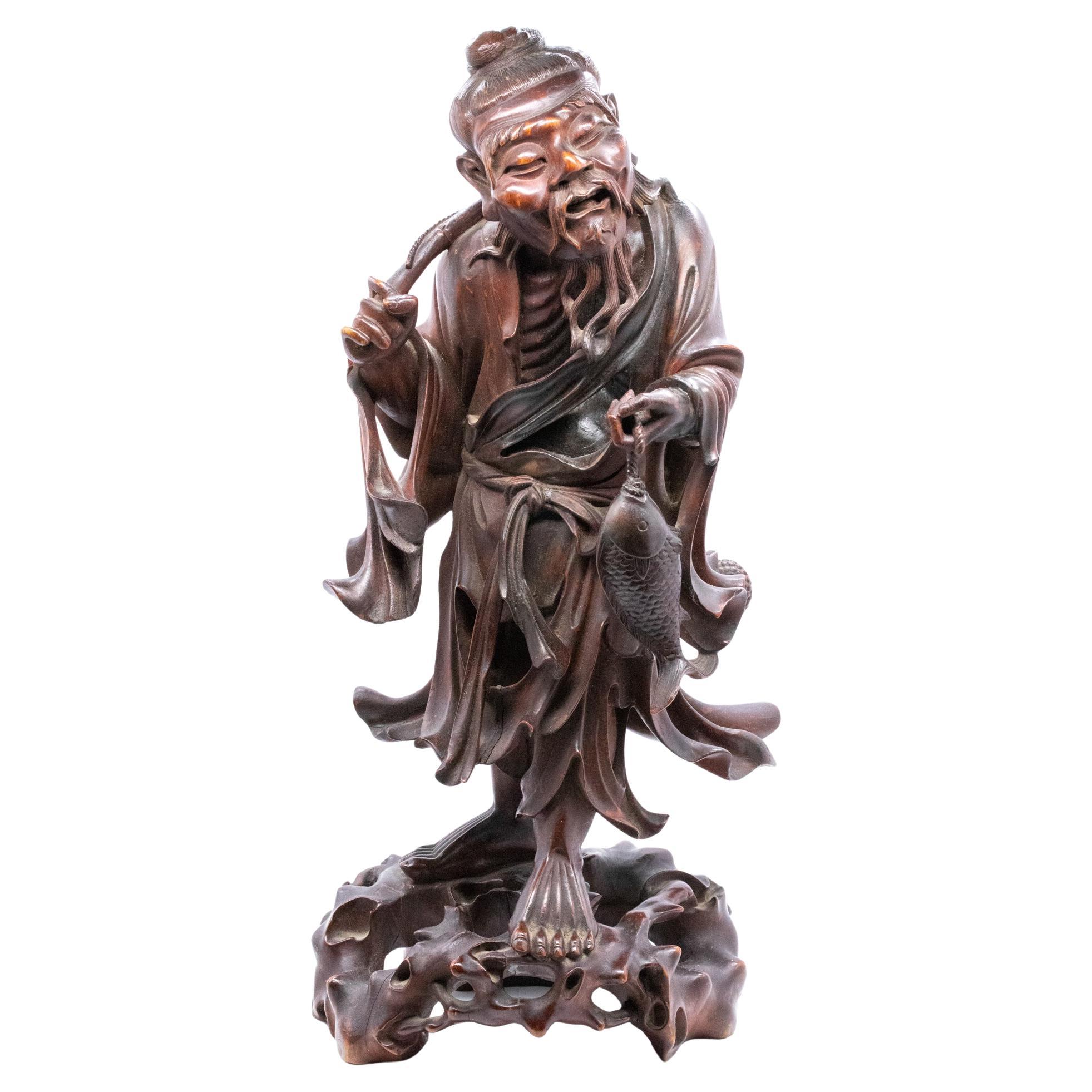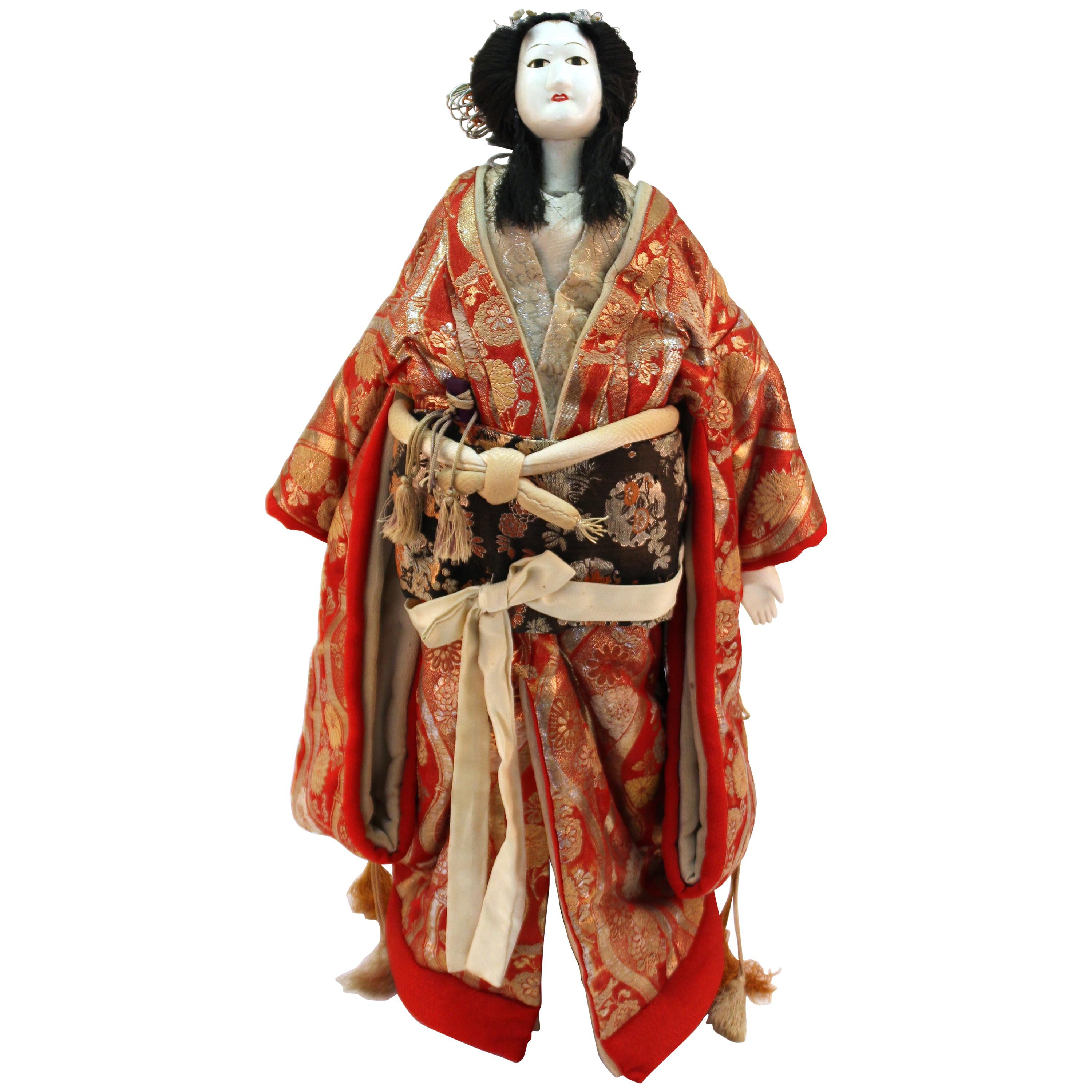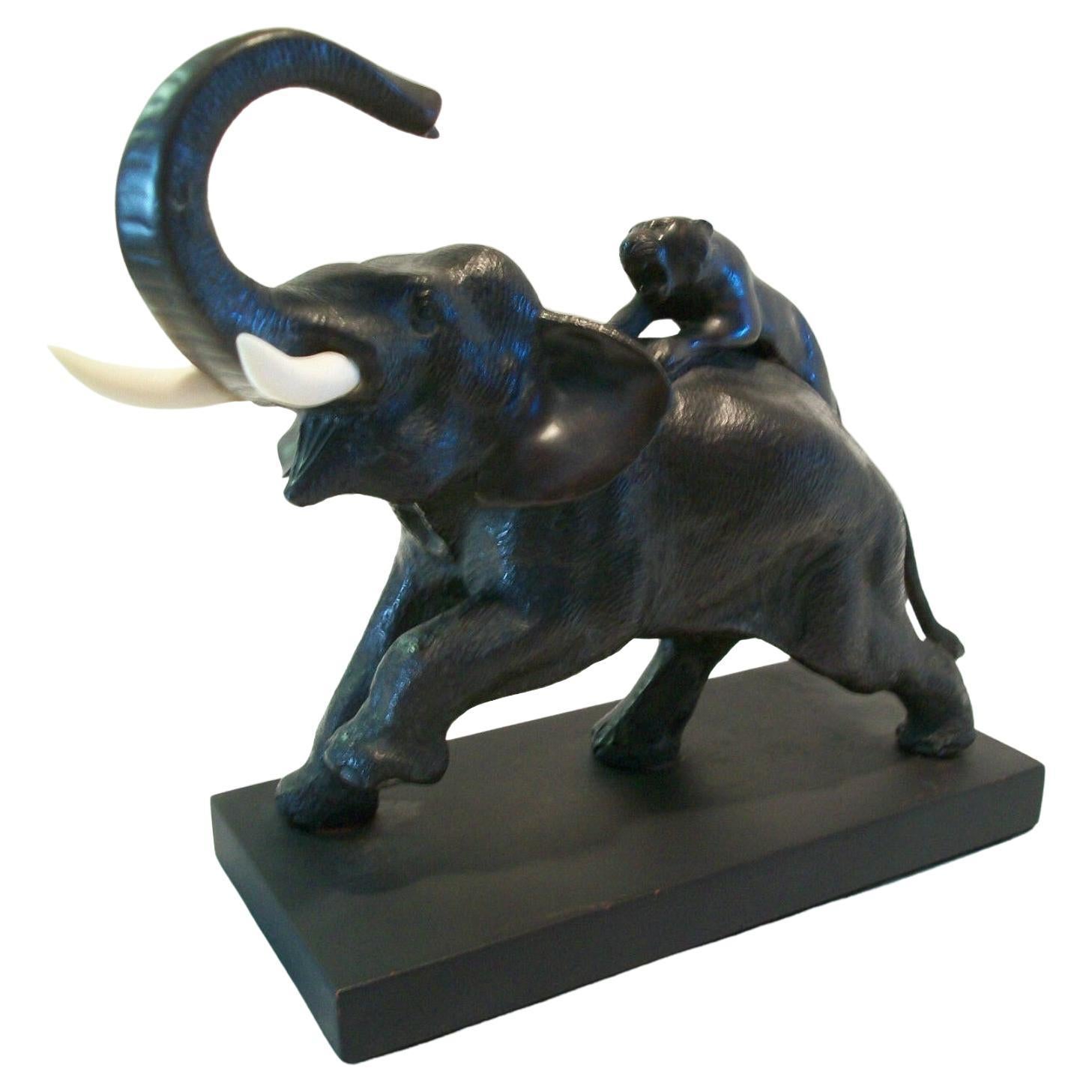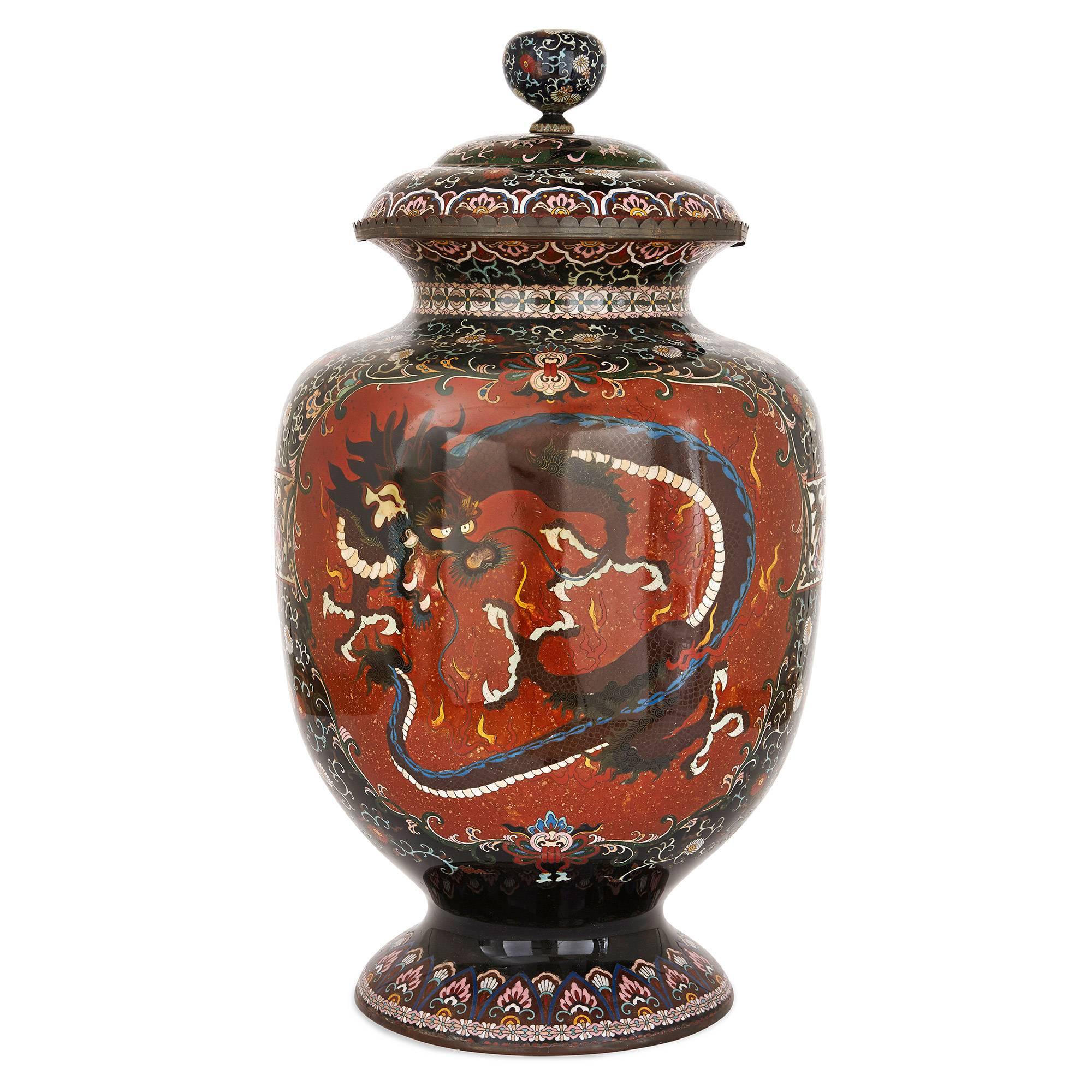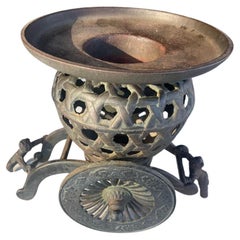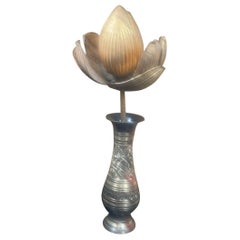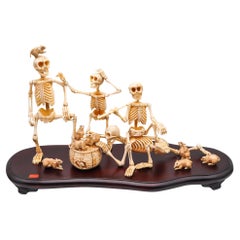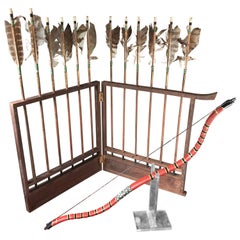
Japanese Antique Pair of Samurai Bow with Ten Arrows Meiji Period, 19th Century
View Similar Items
Want more images or videos?
Request additional images or videos from the seller
1 of 11
Japanese Antique Pair of Samurai Bow with Ten Arrows Meiji Period, 19th Century
About the Item
- Dimensions:Height: 3 in (7.62 cm)Width: 20.5 in (52.07 cm)Depth: 2 in (5.08 cm)
- Style:Meiji (Of the Period)
- Materials and Techniques:
- Place of Origin:
- Period:
- Date of Manufacture:19th Century
- Condition:Wear consistent with age and use.
- Seller Location:South Burlington, VT
- Reference Number:1stDibs: LU128929899451
About the Seller
5.0
Platinum Seller
These expertly vetted sellers are 1stDibs' most experienced sellers and are rated highest by our customers.
Established in 1990
1stDibs seller since 2015
2,205 sales on 1stDibs
Typical response time: 1 hour
More From This SellerView All
- Japanese Huge 18 Inch Antique Temple Shinto Prayer Bell, Historical ItemLocated in South Burlington, VTHistorical Bell- Immediately Useable First ever to be offered A genuine temple used de-accession 96 inch prayer bell with original wooden handled rope from a shrine in Nakamura Ward, Nagoya, Japan An extraordinary opportunity to acquire, collect, use and display the largest scale 18” temple bell of this kind we have ever seen in private hands- including its original wood and hemp rope pull- a Japanese authentic hand cast copper Shinto Suzu bell. The auspicious temple shrine from which this bell comes, was founded in 1156 to honor Ojintenno, who was the 15th emperor of Japan. It was commissioned in part by Minamoto no Tametomo, who was a famous Samurai, who is known as possibly being the first samurai to commit Seppuku. Its big 18" high and 12" diameter bell including a massive hand carved wooden pull handle measuring 17 inches in length shows patina from great age, dates to the late 19th century, and was formerly rung outside a Nagoya Temple great hall where it was enjoyed by members of Japan's local Shinto communities. This bell was authentically rung at this temple shrine. We will include the original 96 inch rope pull with massive 17 inch long hand carved wooden handle. In total, this is an extraordinary copper bell which includes its rare original wood and hemp rope pull. Important: Please view the actual insitu photograph of this amazing relic before it was deaccessioned. This huge old bell dates to the late 19th century period, displays an impressive patina from age, and sounds impressive. It's lower half portion has been purposely hand-hammered by design to improve its sound- this is not damage. The Suzu Shinto bell...Category
Antique 1890s Japanese Meiji Sculptures and Carvings
MaterialsCopper
- Japan Early Ikebana Planter Garden Cart with Children, Meiji PeriodLocated in South Burlington, VTA rare 19th century hard to find Japanese Usubata Flower Planter Cart "Norimono", Late Meiji Period. Japan, this handsome quality old style "garden cart" ikebana planter is an exceptionally rare find and an authentic old work of Japanese art. Brilliantly designed and a handsome plant presentation with removable ikebana vase inserted into an openwork wicker basket set on a wheeled cart...Category
Antique Late 19th Century Japanese Meiji Garden Ornaments
MaterialsIron
- Japanese Fine Antique Gilt Lotus Bud Flower, Edo Period 19th CenturyLocated in South Burlington, VTFrom our recent Japanese acquisitions, a rare find, stem #3 Antique Original Japanese temple "blossominig lotus" flower bud stem. This finely hand carved wood and lacquered gold flower stem was made for a Buddhist 19th century temple altar...Category
Antique 1840s Japanese Edo Sculptures and Carvings
MaterialsWood
$450 Sale Price43% Off - Japan Pair Tall Red And Black Ebony "Moon Gazing" Rabbits , Fine DetailsLocated in South Burlington, VTHere's a beautiful and unique way to accent your indoor gallery or private collection space with this very unusual pair of treasures from Japan! This is a hard to find red and ebon...Category
Vintage 1920s Japanese Taisho Sculptures and Carvings
MaterialsIron
- Japan Large Antique Unique 19th Century Natural Burl Wood PlanterLocated in South Burlington, VTRemarklable natural burl wood planter sculpture - Lovely to Touch, Feel, and Hold in your hands From Japan comes this unique and attractive example of a natural organic burl wood sculpture in the form of a planter. It proudly shows its good age boasting a wonderful smooth dark surface patina from decades of prior ownership. This stunning single root sculpture is a natural root wood burl . Displays flat on any surface making an impressive presentation. Includes original brass insert as collected. Dimensions: 15 inches in length and 8 inches high. Would make a special display work of art for your home, office, or private gallery space. One-of-a-kind. This is an exceptional one-of-a-kind example. Provenance: Kyoto, Japanese collection. Lifetime guarantee of authenticity: All of our Asian works of art come with our Lifetime Authenticity Guarantee. About Japanese turtles...Category
Antique 19th Century Japanese Meiji Planters and Jardinieres
MaterialsWood
- Japanese Fine Antique Blue and White Floral Tea Bowl, 19th CenturyLocated in South Burlington, VTFrom Japan, a beautiful hand-built, hand painted and glazed, blue and white "floral" tea bowl from the late Edo to earlhy Meiji period, 19th century, likely from an Arita pottery Kil...Category
Antique 19th Century Japanese Meiji Ceramics
MaterialsCeramic
You May Also Like
- Antique Japanese Meiji Period Kneeling Samurai Warrior, Circa 1870-1880Located in Savannah, GAAntique Japanese Kneeling Samurai Warrior, Circa 1870-1880. Japanese Meiji period samurai with detailed presentation of robes and helmet.Category
Antique 19th Century Japanese Meiji Sculptures and Carvings
MaterialsFabric
- Antique Japanese Meiji Period Painted Wood Sign with a Samurai, 19th CenturyLocated in Yonkers, NYA Japanese carved and painted wooden sign with a Samurai from the Meiji Period, 19th century. This 19th century sign with a samurai was made in wood and painted in Japan during the Meiji period. The narrow rectangular panel features a painted frame with a character depicted in the upper section, showcasing a seated samurai wearing his armour. The section below is adorned with four lightly carved and back painted calligraphies. This tall panel can be hinged thanks to two square buckles on the top. Made during the 19th century, this antique Meiji period painted wood sign...Category
Antique 19th Century Japanese Meiji Sculptures and Carvings
MaterialsWood
- Japan 1890 Meiji Period Signed Assembling of Okimono with a Group of SkeletonsLocated in Miami, FLA signed Okimono from the Japanese Meiji period (1868-1912). Very rare, unusual and large sculptural assembling of a dysplaying piece of okimono. Created in Japan during the imperial period of the Meiji (1868-1912). This extraordinary piece okimono sculpture depict a group of four intricately and realistically rendered carousing males skeletons representations (Gaikotsu) standing in several position. One skeleton is crouched down playing with mouses in the floor. The second is seated resting in the other's back, peacefully smoking opium. The others two are fully standing in interacting position. The entire composition is arranged freely displayed on the wood base including a woven basket, apparently with food and four playfull mouses. There are an extra five mouses in different positions, freely playing around, all of them with the eyes accented with carved black ebony. The composition is displayed on a four-legged free form carved wood platform with an inlaid red plaque engraved with the artist's signature. The level of detail and the quality of the carving is truly exceptional. Has an exact measurements of 216.15 mm by 139.7 mm by 359.41 mm (8.51 x 5.5 x 14.15 Inches). After an extensive collection of data, comparables and references to this piece, we have only been able to find only three okimono sculptures like this, with similar themes and the same quality of work. References Note: A similar carving of four skeletons playing an animated game of dominos, signed Shutaro in an inlaid rectangular red plaque, was sold in London by Christie’s South Kensington in October 14 2014, Lot 120 Sale 5546. References Note: A similar carving with four skeletons in an otherwise typical victorian scene of a photographer and three sitters signed Shutaro in an inlaid rectangular red plaque, was sold in Edinburgh at Lyon & Turnbull in November 7, 2018. References Note: A similar carving with five skeletons seated, playing cards and drinking, was sold in London by John Nicholson Fine Art on September 26, 2018. Meiji period, is an era of Japanese history that extended from October 23, 1868 to July 30, 1912.The Meiji era was the first half of the Empire of Japan, when the Japanese people moved from being an isolated feudal society at risk of colonization by Western powers to the new paradigm of a modern, industrialized nation state and emergent great power, influenced by Western scientific, technological, philosophical, political, legal, and aesthetic ideas. As a result of such wholesale adoption of radically different ideas, the changes to Japan were profound, and affected its social structure, internal politics, economy, military, and foreign relations. The period corresponded to the reign of Emperor Meiji. It was preceded by the Keio era and was succeeded by the Taisho era, upon the accession of Emperor Taisho. Okimono, is a Japanese term meaning for display an ornament; art object; or decorative object, usually displayed in a tokonoma or butsudan "Buddhist altar". It is an ornament or figure, especially one placed in a guest room. An okimono may be a small Japanese carving...Category
Antique 1890s Japanese Meiji Sculptures and Carvings
MaterialsWood
- Tenjin-Sama, Wood, Japanese Shinto Deity of Learning and Wisdom, Meiji PeriodLocated in Point Richmond, CATenjin-Sama, Shinto Deity of Learning and Wisdom, Meiji Period Tenjin,-Sama, Deification of Sugawara no Michizane, was a famous scholar, poet and politician of the Heian period. In...Category
Antique Late 19th Century Japanese Meiji Sculptures and Carvings
MaterialsWood
- Meiji Period 19th Century Japanese Cloisonné ChargerLocated in Lambertville, NJLovely large Japanese cloisonné enamel charger Meiji Period (1868-1912). Measure: Large 14 inch. Intricate enamel over brass cloisonné portraying a colorful floral and foliage motif...Category
Antique 1890s Japanese Meiji More Asian Art, Objects and Furniture
MaterialsCopper
- 19th Century 'Meiji Period' Japanese Bronze VaseLocated in North Miami, FL19th Century (Meiji Period) Japanese bronze vase. It is realistically cast as a gnarled pine tree trunk with vines growing around it.Category
Antique 19th Century Japanese Meiji Vases
MaterialsBronze
Recently Viewed
View AllMore Ways To Browse
Samurai China
Asian Warrior Sculpture
Wood Japanese Warriors Japanese Warriors
Bow Lantern
Asian Arrow
Samurai Warrior Sculpture
Bamboo Chinese Lantern
Train Lantern
Antique North Arrow
Bow Weapon
Arrow Lantern
Samurai Arrows
Chinese Small Rack
Samurai Bow
Weapons Rack
Antique Train Lanterns
Lantern Light Japanese
Temple Offerings
